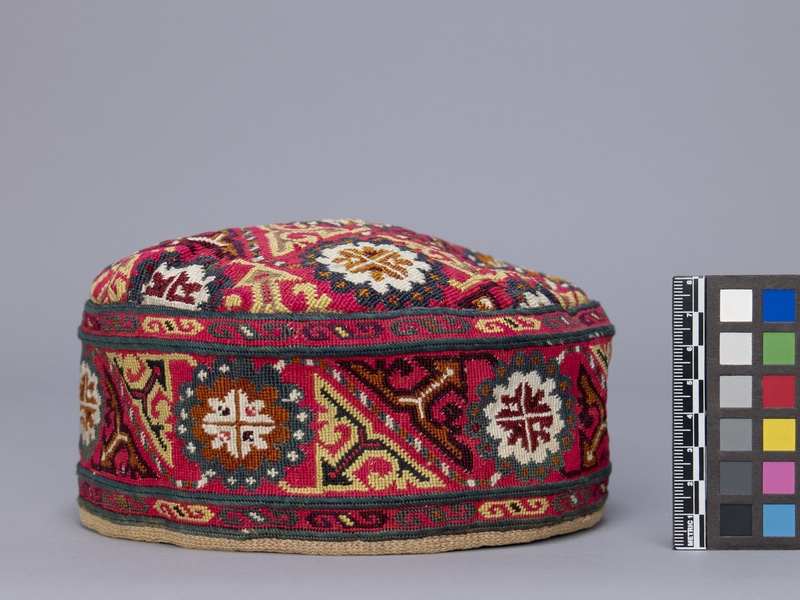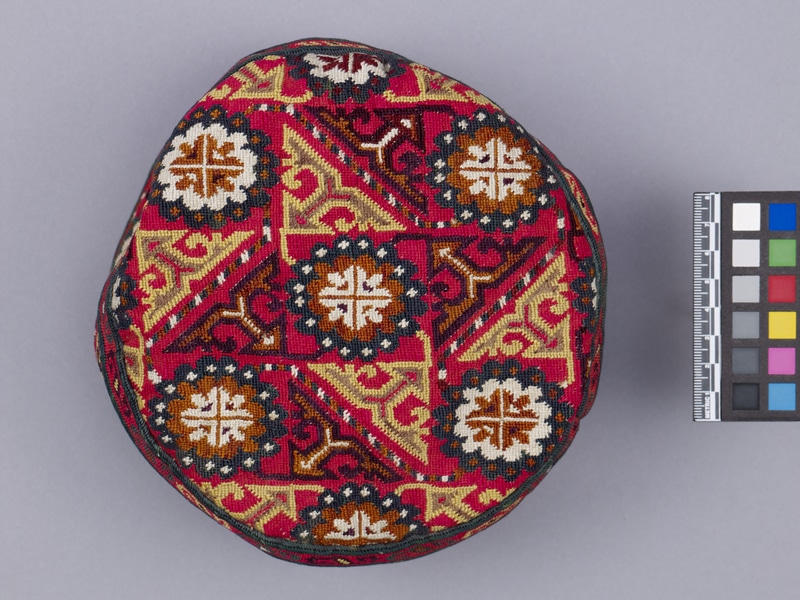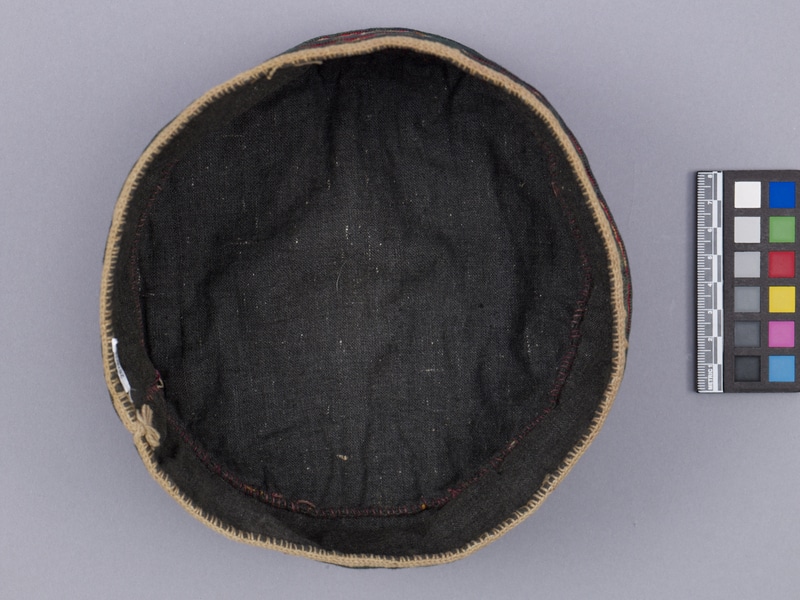Woman's Hat Item Number: 2878/14 from the MOA: University of British Columbia



Description
Round, red, brimless cap embroidered with multicoloured geometric designs over the entire surface. The embroidery depicts several repeating flower designs known as “gumboori”. Around the top and bottom edges of the cap is a Central Asian double-scroll thunder pattern which is symbolic of fertility/fecundity. The inside of the cap is a grey-black. Around the bottom edge of the cap underneath the thunder pattern is band of light brown stitching. Worn with 2878/15.
History Of Use
Traditionally, all women of the Chitrali or Kho tribe who inhabit the Chitral District of Pakistan wear this essential dress item. Like the Kalash'a, Chitralis (Khos) believe that baring the top of one's head displeases god and may even bring spirit possession by evil forces upon oneself. Therefore all traditional Chitrali (Kho) women and men are obliged to wear some sort of headgear. These embroidered hats are stitched by Chitrali (Kho) women at home.
Chitrali (Kho) women mark strict "purdah" (seclusion), a custom that may have ben adopted over time from the neighboring Pathans groups, where female seclusion is central to Pathan family pride and honour. Traditionally women wear these topi hats under a cotton shawl or "chador" (approximately two metres long) with the ends of the shawl crossed in front under the chin and tossed loosely back over the shoulders. However, rather than wearing a shawl in this open style, the more traditional way of wearing them (especially among Chitrali aristocracy) is as follows: the woman places the topi hat on top of her head (almost straight up from the forehead) and then winds a long scarf (usually white and fine cotton or silk) around and around the base of the topi like a turban, allowing the embroidered upper edge and top of the hat to show. One end of the scarf is covered up under layers of the wound cloth and the loose end goes under the chin and tucks up into the 'turban' on the opposite side at the ear. If their father-in-law, other older male relatives or strangers appear in the household compound, then custom requires that the woman pulls up the shawl from under her chin to cover the lower half of her face.
Narrative
This hat was given to the collector from a Kho (Chitrali) man, Wazir Ali Shah (died 1990), a member of the aristocratic 'class' in Chitral called "Adamzadas" or nobles. Adamzadas form about 15% of the total population in Chitral District and for centuries performed the function of scribes, secretaries and treasurers for those rulers (Mehtars) of Chitral that bear the family name of Katur, and can be traced back to the Mongols. It is likely that one of the older women in Wazir Ali Shah's household made this hat (topi).
Item History
- Made in Chitral, Northwest Frontier, Pakistan
- Collected between 1970 and 1980
- Owned by Tamarin Productions Inc. before May 4, 2011
- Received from Tamarin Productions Inc. (Seller) and Ruth Read Bequest (Funding source) on May 4, 2011
What
Who
- Culture
- Chitrali
- Previous Owner
- Tamarin Productions Inc.
- Received from
- Tamarin Productions Inc. (Seller) and Ruth Read Bequest (Funding source)
Where
- Holding Institution
- MOA: University of British Columbia
- Made in
- Chitral, Northwest Frontier, Pakistan
When
- Collection Date
- between 1970 and 1980
- Ownership Date
- before May 4, 2011
- Acquisition Date
- on May 4, 2011
Other
- Item Classes
- textiles
- Condition
- excellent
- Accession Number
- 2878/0014